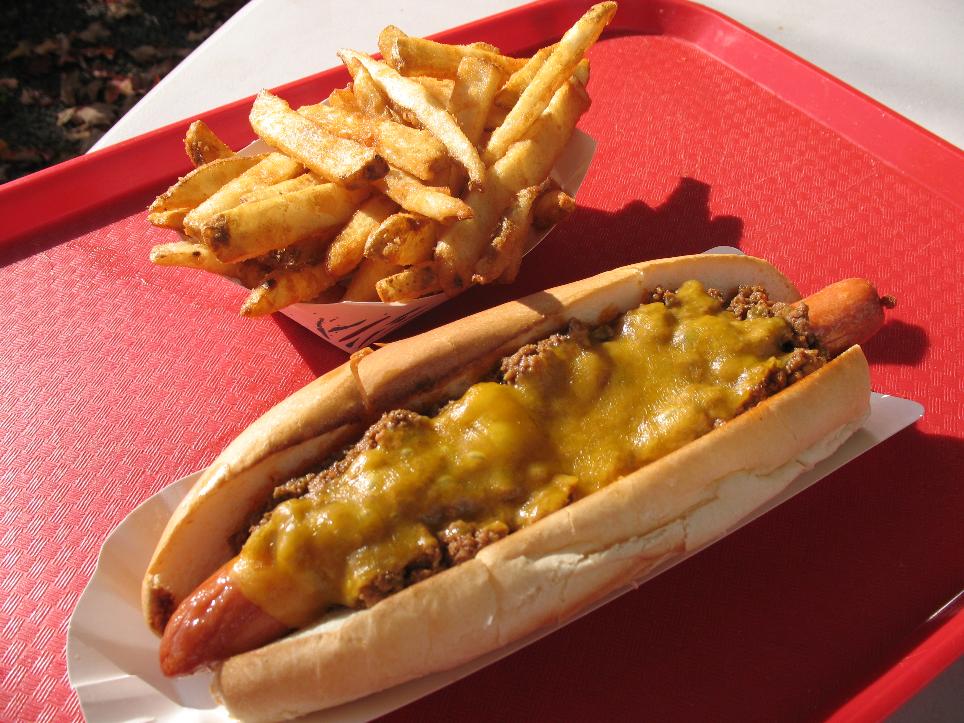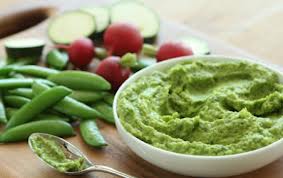Why Are We Fat?
Even though I'm an identical twin, I've outweighed my brother John from the moment we emerged by caesarian section. I was a 6-pound little piggy, whereas John was the 4-pound, 4-ounce victim of my embryonic gluttony (or so the family joke/legend has forever maintained).
In the decades since our birth, I have regularly climbed into "overweight" BMI territory and struggled to escape. Staying lean has been as difficult for me as it is effortless for John—this despite lifelong eating and exercise patterns that strike our friends as spooky in their similarity. To this day at family gatherings, we match each other bite for bite—and, just as in boyhood, we still fight over the last pork chop on the platter. Same behavior, same DNA: What's left to account for such divergent weights?
My only consolation is that whatever's going on, apparently I'm not alone. In recent years, scientists have observed an equally mysterious increase in girth around the globe. "Obesity seems to have risen in virtually every country where detailed data is available," says David B. Allison, Ph.D., director of the Nutrition Obesity Research Center at the University of Alabama at Birmingham. This even includes areas in the world like rural China, where stereotypically American fat factors—from junk food to video games—have yet to infiltrate peoples' lives.
The phenomenon is difficult for critics of the Western diet and sedentary lifestyle to explain. Even harder to explain: mounting evidence that it's not just humans growing heavy. In a 2011 study, Allison and his colleagues reviewed weight changes over several decades in 24 separate mammal populations. They analyzed 20,000 critters, from chimps at primate research centers to pet dogs and cats across the nation to wild Norway rats and their lab-coddled cousins. Every species they surveyed showed a trend toward packing on the pounds. The odds of this happening by chance alone: 1 in 1.2 million.
"I think what our study clearly shows," says Allison, "is that there must be other factors influencing global weight gain beyond the usual suspects of food marketing and reductions in physical activity brought about by changes in our man-made environments and schedules."
Allison's conviction is shared by burgeoning ranks of researchers worldwide. These investigators are quickly closing in on a host of unusual suspects that can prove to be surprisingly potent adversaries in our battle of the bulge. Ubiquitous and often operating invisibly, these emerging puppetmasters can't explain every weight problem. But for those of us who've always felt as if something unseen has been tilting the balance against us, it now seems almost certain our suspicions were right.
Who—or what—are they? Armed with an unhealthy dose of paranoia, I've set out to find the invisible thumbs pushing down on my scale while leaving John's untouched.
SUSPECT 1: Heavy Air
In 2012, Arne Astrup, M.D., a renowned obesity researcher at the University of Copenhagen, reasoned that given the global weight gain noted in humans and animals alike, a specific environmental factor must be common to all. Diet, livelihood, access to technology, health care—these vary dramatically across the fattening globe. Not so the atmosphere we all breathe.
For millions of years, the planet's concentration of carbon dioxide hovered consistently between 180 and 300 parts per million. But thanks to industrialization, this number has spiked to unprecedented highs in less than a century.
Last May, researchers at the National Oceanic and Atmospheric Administration reported that the daily average CO2 level had reached 400 parts per million, a figure not seen for at least 3 million years, long before humans evolved. What's more, this increase has been accelerating in virtual lockstep with the expansion of global waistlines.
To Dr. Astrup, this is more than just a statistical coincidence. He believes a cause-and-effect connection exists—and that the physiology backs him up.
As Dr. Astrup explains it, the more CO2 you breathe in, the more acidic your blood becomes. This increase, in turn, boosts the activity of your orexin neurons, brain cells discovered in the late 1990s that are exquisitely sensitive to changes in blood acidity. The name "orexin" is derived from the Greek word for appetite—an apt name for nerve cells that so powerfully drive our urge to eat. The faster our orexin neurons fire, the more unconscious edicts we receive to stuff ourselves and then head for the couch. "We know that these neurons are quite potent, so it is very likely that the increase in carbon dioxide could activate them significantly," says Dr. Astrup.
In his study, Dr. Astrup estimated that increases in atmospheric CO2 over the past century are enough to hasten the average firing rate of a person's orexin neurons by 1 percent. And if anything, this change may be an underestimation due to the fact that modern human beings spend much more time indoors—where CO2 concentrations are even higher—than our ancestors did just a century ago.
To test the atmosphere hypothesis, Dr. Astrup and his colleagues recruited six young male volunteers who agreed to be exposed to higher-than-normal levels of CO2 in a special respiration chamber. The result: a 6.1 percent average increase in calories consumed. This may not sound like much until you consider that this change took place in a mere seven and a half hours. Talk about inhaling your food.
"We now plan to follow up with a larger study to substantiate and expand the results," says Dr. Astrup. "Many would think that this is too fantastic of a hypothesis to be true, but if it turns out to be correct, the solution to the obesity problem could be very different from what we believe today."
Is It Making Me Fat? Probably Not
John lives in New Jersey, not far from the Atlantic City Expressway and its nonstop stream of casino-bound cars, each producing, on average, 20 pounds of CO2 per gallon of gas it burns. I live in the bucolic splendor of western Pennsylvania. There aren't nearly as many cars here, and I suspect that a good portion of vehicle emissions are absorbed by the forests. So in my case, carbon dioxide doesn't appear to be the culprit.
SUSPECT 2: Chemical Weapons
We live today in a swirl of synthetic compounds and environmental toxins that our hominid ancestors never had to deal with on the savannah. Fairly or not, many of these chemicals have long been indicted for making us sick. Until recently, however, few imagined that they might also be making us fat. That idea began to hatch quickly after Bruce Blumberg, Ph.D., a developmental biologist at UC Irvine, coined the term "obesogen" in a 2006 study published in the journal Endocrinology.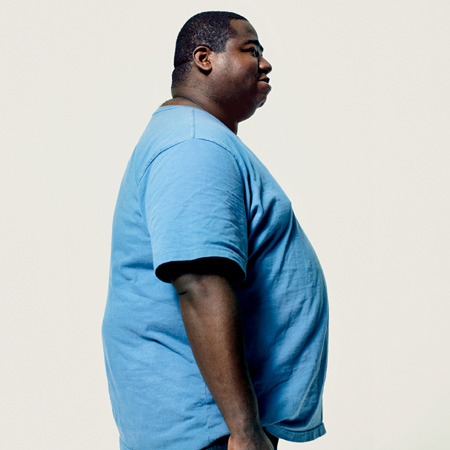
"Simply put," Blumberg says, "obesogens are chemicals that make people and animals fat. 'Obesogen' just seemed like the obvious word for such a chemical."
Since Blumberg's inaugural paper appeared, at least 20 separate compounds have been shown to promote fat storage by interfering with hormonal function—hence the term "endocrine disruptor." For example, there's bisphenol-A (BPA) and phthalates, both found in plastics, and tributyltin compounds (TBT), potent antimicrobial agents found in everything from wood preservatives and boat paints to the water systems at textile mills. Mice exposed in utero to as little as a few parts per billion of TBT go on to become much fatter than otherwise identical fetuses—despite receiving the same food and access to exercise.
It doesn't stop there. Once these fat mice mature and mate, Blumberg discovered, they pass their weight-gaining ways on to their offspring. Those second-generation rodents, in turn, pass the problem on to their progeny—mice that were never exposed to the chemical.
Even your doctor may be unwittingly doling out obesogens, since so many prescription drugs list "weight gain" as a possible side effect. "Rosiglitazone, for example, promotes weight gain and increased fat mass in most adults," says Blumberg. You may know rosiglitazone better by its brand name: Avandia, the diabetes drug. Many other popular meds—for depression, hypertension, allergies, and inflammatory disorders—may have caused millions of patients to gain pounds.
It is now well documented that many such compounds can also sneak through filtration systems into our drinking water. In Philadelphia, for example, water authorities reported finding 56 different drugs and their by-products in municipal tap water. And the water relied on by 18.5 million Southern Californians has been found to contain antiseizure and antianxiety drugs.
"Many of us are working as hard as we can to diminish exposure to these substances," Blumberg says. "But there's a huge, huge pushback from industry, which claims its chemicals are perfectly safe. It's a constant battle."
Is It Making Me Fat? Definitely
Since our college years, John and I have always lived apart, usually separated by hundreds of miles. John has favored urban settings while I've spent more time in the country. Might this mean I've swigged down more farm chemicals in my tap water? It's difficult to know what our respective environmental exposures have been, but they've definitely differed.
My pharmaceutical history is more telling. While we've both endured recurrent sieges of anxiety and depression since adolescence, I was the one who decided in my mid-30s that I couldn't stand it anymore and sought relief with antidepressants. As much as these helped to improve my mood, there was a probable downside too: The fat gap between John and me widened.
SUSPECT 3: Dietary Tricksters
Not only have modern times made food a lot easier to obtain, but much of what we eat today would be unrecognizable as edible to our ancestors. Wild game, berries, and plants have been replaced by partially hydrogenated oils, high-fructose corn syrup, and genetically modified grains. And let's not even talk about Twinkies.
Nutritionists endlessly debate the suspected villainy of various processed foods. Some single out fats and others sugars, and still others are convinced that too much of any food is our ruin.
"In my view, all of these hypotheses are plausible, although there's no definitive evidence yet that any of them is correct," says Jeffrey M. Friedman, Ph.D., M.D., head of the molecular genetics lab at Howard Hughes Medical Institute. "It's even possible that different people respond differently to each one."
Even so, mounting evidence does suggest that at least some of the quasi-unnatural foodstuffs lining supermarket shelves today may be tricking our bodies into overindulgence. For example, in recent animal experiments, researchers at the National Institutes of Health found that soybean and other vegetable oils common in the Western diet cause the brains of lab mice to crank out extra endocannabinoids—natural marijuana-like compounds that trigger the munchies.
One particular component of these oils, linoleic acid, leads rodent brains to become "stuck" in feeding mode. In the same NIH study, the researchers fed two groups of mice a chow with identical proportions of fat and carbs. The only difference was that the first group's food contained 1 percent linoleic acid (consistent with the U.S. diet circa 1900) while the second group's food contained 8 percent (closer to the American diet today). Not only did the mice in the second group act like snack-crazed stoners, scarfing down more food, but they also inexplicably stored more of those excess calories as fat.
A whole host of other foods also seem capable of upsetting our finely tuned systems for weight balance. In a great example of the law of unintended consequences, researchers at the University of Texas Health Science Center at San Antonio found that normal-weight people who often drank diet soda were almost twice as likely to become overweight or obese over a period of seven to eight years as those who avoided these drinks. Other research from Purdue University has found that artificial sweeteners reduce an appetite-dampening hormone called GLP-1 in the brains of rats, potentially prompting the rats to overeat.
Not that an abundance of real sugar encourages our calorie-sensing mechanisms to work well either. This seems particularly true of fructose, a natural sugar that most commonly enters the U.S. food supply in sweetened beverages. In a 2013 study in the Journal of the American Medical Association, Yale researchers used fMRI scans on 20 volunteers to study their brains' reaction to two drinks, one with only glucose and the other only fructose. The glucose drink reduced bloodflow to a brain region associated with appetite, effectively dampening hunger. The fructose drink, on the other hand, had no such effect, leaving the volunteers' hunger switch in the "on" position.
Is It Making Me Fat? Probably Not
John and I rarely drink sugared soft drinks, and never the diet variety. We steer clear of American dietary excess—no quintuple burgers or Oreo-encrusted fried ice cream for us. It's possible I consume a bit more in the way of "unnatural" foods than John does, given the fact that my travel schedule interferes with sit-down family meals. Still, on those occasions when the two of us dine together, it becomes apparent that we eat as identically now as we did in childhood, minus the belching contests.
SUSPECT 4: Sleeping Thickness
From the moment Thomas Edison invented it, the lightbulb has been irrevocably changing the parameters of modern life. Arguably its most problematic (if largely unacknowledged) effect has been on our sleep patterns. The conquest of night by artificial light—from those first incandescent bulbs to today's seemingly inescapable TV, smartphone, and tablet screens—has caused our sleep time to plummet. At the dawn of the 20th century we logged about nine hours a night; we average only six hours and 51 minutes per weeknight today.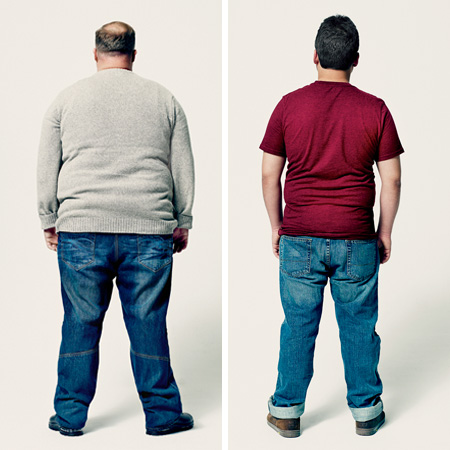
You'd think that being awake and active for so much longer each day would prove more slimming than fattening. But a survey by the National Sleep Foundation found that 41 percent of self-reported short sleepers (less than six hours a night on workdays) are obese, versus only 28 percent of those who routinely sleep eight hours or longer. Other investigators have found links between sleep deprivation and obesity in a variety of ages and ethnicities.
One explanation is that sleep debt boosts levels of ghrelin, an appetite-stimulating stomach hormone. Inadequate shut-eye also appears to suppress leptin, a hormone made by fat cells that puts the brakes on further eating. For the tired masses, it's a double whammy: Ghrelin's "Feed me!" commands soar as leptin's "I'm stuffed!" signals are stymied.
In one classic experiment, University of Chicago scientists restricted healthy young men (average age 22) to only four hours of sleep a night for two consecutive nights. By the second morning, the guys were more than just bleary-eyed; blood tests revealed that their appetite-rousing ghrelin levels had surged 28 percent even as their satiety-signaling leptin dropped 18 percent. This hormonal hammerlock left them ravenous, particularly for energy-dense, high-carb foods.
Since then, other researchers have learned that sleep deprivation can alter insulin sensitivity. This fosters even more weight gain and can lay the groundwork for diabetes and heart disease. It's all enough to keep a guy awake at night.
Is It Making Me Fat? Definitely
John and I have had no shortage of sleep problems over the years. His bouts with insomnia are probably worse than mine. On the other hand, he's free of sleep apnea, a disorder that degraded my own sleep quality for years before I was finally diagnosed. Since my successful treatment with a CPAP machine, my weight has dropped a few pounds, narrowing my sibling fat gap a bit.
SUSPECT 5: Degrees of Fat
Somewhere between shivering in the freezing cold and sweating in the humid swelter lies a climatic comfort zone that many of us would prefer to live in all the time. And with modern technology, we're usually able to do just that.
This deliverance from the tyranny of temperature extremes has happened with remarkable alacrity. E Source, an energy utility research firm, reports that the "thermal standard for winter comfort" in U.S. homes rose from 64°F in 1923 to 76°F in 1986. And the number of U.S. homes with central air increased from 23 percent in 1978 to 63 percent in 2009, and it continues to climb. Summer's sizzle, like winter's nip, has become largely optional—and the pace of that change almost exactly parallels the rise of obesity.
Once again, many researchers doubt that this is a coincidence. "Every pig farmer knows that to fatten hogs, it's important to keep them warm in the winter and cool in the summer," Allison says.
As it turns out, maintaining a constant body temperature takes an amazing amount of metabolic energy. Compared with a comfortable 72°F, for example, keeping the thermostat at 61° requires the average man to burn 167 calories more a day to maintain a stable body temperature. Even colder air temps probably activate the residual brown fat stores in our upper chest and neck. This fat, in turn, burns calories, generating heat by a process physiologists call "nonshivering thermogenesis."
"Alternatively," says Emily Dhurandhar, Ph.D., a postdoctoral researcher at the University of Alabama at Birmingham Nutrition Obesity Research Center, "in hot environments we tend to eat lighter foods and eat less in general. And for every 2° rise in our body temperature, our metabolic rate increases 7 to 17 percent." No wonder fevers and weight loss go hand in hand.
It would be naive to conclude that resetting our thermostat could by itself erase the weight so many of us carry around. "It's even conceivable that for some people, being too cold might boost food intake and add adipose tissue to increase insulation," says Allison. On the other hand, just saying no to climatic pampering might very well help some people lose pounds. If nothing else, you'll save on your utility bills.
Is It Making Me Fat? Maybe
From 1984 to 1995 I lived in St. Paul, Minnesota, where temperatures regularly dip to *20°F in winter and climb close to 100° on sultry August days. Heating our house above 62° was prohibitively expensive, and summers on the northern plains went by so quickly that only the upper crust could justify paying for air conditioning. I also worked at home, which guaranteed little respite. By contrast, John lived in comparatively temperate Philadelphia and spent most days in the comfort of a corporate office, returning by night to a climate-controlled home.
For at least these 11 years, I'm convinced I needed to burn more calories than John just to keep from freezing or parboiling. This did seem to narrow our weight difference a little. But with my move back to Pennsylvania—and purchase of an HVAC system—my scale readings crept up again.
SUSPECT 6: Weight Gone Viral
From fever to sneezing fits, pinkeye to body aches, germs are ingenious in the miseries they bring us. Now imagine if this long list of sickeningly familiar symptoms included "uncontrollable weight gain."
Beginning in the early 1990s, Nikhil V. Dhurandhar, Ph.D., a professor at the Pennington Biomedical Research Center in Baton Rouge, began making the case that AD-36—a virus linked to human respiratory infections and diarrhea—is a blubber bug. First he proved that intentional infection of chickens, rats, mice, and a nonhuman primate species, the marmoset, leads to significant weight gain. Of course, it's clearly unethical to infect humans just to see what happens to their waistlines. So in 2005, Dhurandhar, Richard Atkinson, M.D., and their colleagues tried another tactic. They screened 502 people of various body weights to see which ones possessed antibodies for AD-36, a sure sign of previous infection. Among the obese volunteers, 30 percent tested positive—nearly three times the rate seen in lean study participants.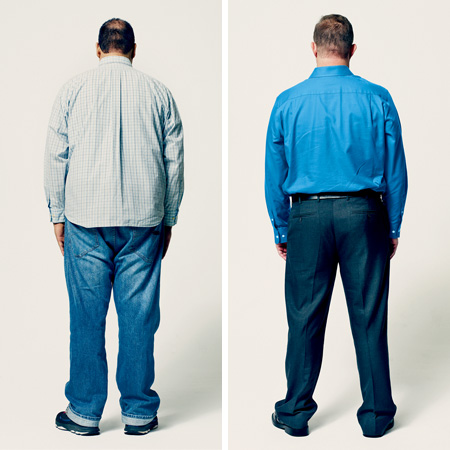
In a second phase of the study, the researchers surveyed the weights of 89 pairs of twins. In 28 of these pairs, the twins were "discordant" for infection—that is, one tested positive and the other negative. The infected twin showed significant increases in both BMI and body-fat percentage over those of his or her virus-free sibling.
Since then, the case against AD *36 continues to strengthen. In a meta-analysis published in 2012, scientists at the University of Tokyo reviewed 10 independent studies on AD-36. Their discovery: The average BMI of people with antibodies to the virus was 3.2 points higher than that of their never-infected counterparts. As a result, the bug-bitten group was nearly twice as likely to be obese.
Is It Making Me Fat? Definitely
When I asked Dhurandhar if he could test me and John for AD-36 antibodies, he agreed. The day our tests came back, Dhurandhar invited me to dinner for the unveiling. Right before the moment of truth, we called John so he and I could face our results together.
"John," Dhurandhar said, reading from his sheet, "you are antibody-negative."
"I knew it," I said, happy for John and jealous at the same time. One twin down, one to go. I couldn't help noticing my knees were now shaking.
"And Jim," Dhurandhar said, "you are antibody-positive."
I immediately started to blubber out my fears and desperation. John felt my pain instantly. "Oh, stop being a fat baby," he said. "You'll do fine."
Mercifully, Dhurandhar agreed. "Just because you've been infected at some point by AD-36 doesn't mean you're doomed to become fat," he reassured me. "But it may help explain why you've had more trouble keeping trim than John. Many of my patients are actually glad to find out."
As much as we'd like to think we can control every aspect of our weight and sculpt whatever body we aspire to have, these ambitions look increasingly like fantasy. From the fat-guarding genes we happen to inherit to a chance viral infection, some hands we're dealt early can't be changed.
But for both John and me, new insights into what's really driving our respective sizes have proved to be a tonic to us both. His ongoing jokes notwithstanding, John is relieved of the burden of moral superiority—a surprisingly heavy load for any twin to shoulder.
As for this fat baby, I feel better too, knowing it's not all my failing. By blaming myself less for outweighing my thin twin, I'm inspired more than ever to narrow our gap.
And from this day on, the last pork chop is John's.
- Prev:Bet on Weight Loss
- Next:Mood Helps Your Diet
-
How Loud Noise Affects Your Taste
It isn’t always easy adjusting to life at 30,000 feet—and
-
Build muscle mass quickly with the Abs Diet
Pick three to five multi-muscle moves and perform them in a circuit, w
-
Abs Diet Energy Drink: Endurance Shake
Endurance Shake When the finish line is 10 kilometers away, you need t
-
47 Foods You SHOULD Be Eating!
The 10 Commandments of Fat Loss post the other day got a lot of attent
-
Weight Loss Solutions at
The perfect weight-loss article would include only four words: Eat les
-
Eat Out and Still Lose Weight
To see your abs, you don’t have to hide from Red Lobster. Individuals
- DON'T MISS
- Lose Weight WITHOUT Dieting!
- The Best Time of Day to Eat Carbs
- The Truth About the Starbucks Diet
- Trick Your Hormones, Shrink Your Gut
- 7 Strategies to Satisfy Hunger and Lose Weight
- Smoking and Weight Loss
- Eat the Abs Diet perfect snack for weight loss
- Belly Off! Club: Darren Williams
- Paleo, Gluten and Miley Cyrus...OH MY!
- How Being Fat Makes You Stupid

